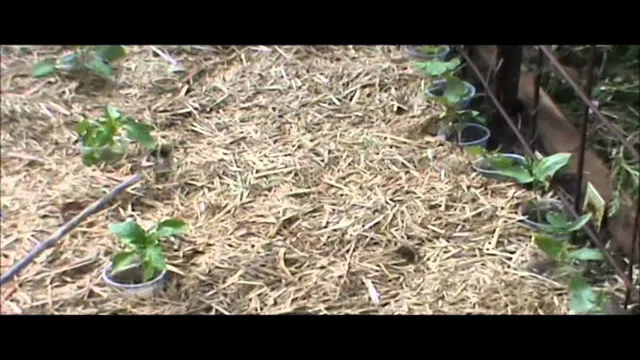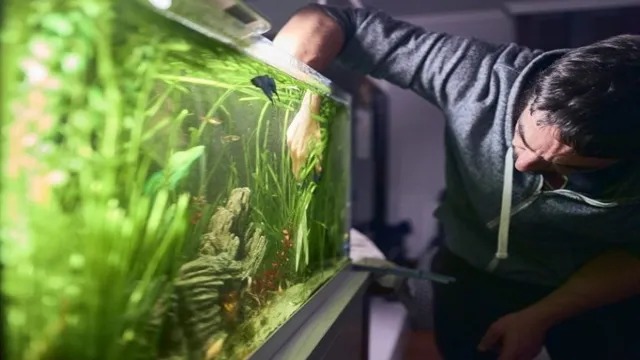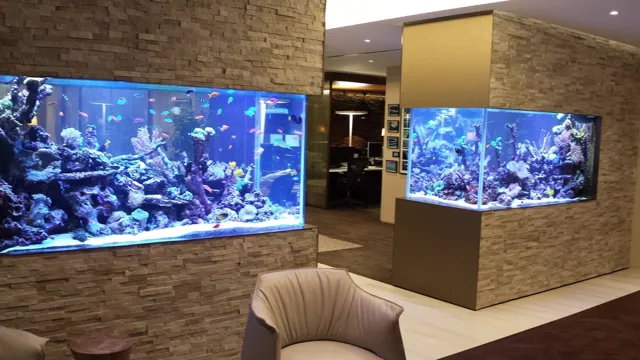Have you recently added plants to your aquarium and noticed they’re starting to wilt or wither away? This is a common issue known as “plant shock,” which occurs when plants are introduced to a new environment with different water parameters and lighting. If you’re experiencing this problem, don’t worry! There are several preventive measures you can take to ensure your plants thrive in their new home. Firstly, it’s essential to research the specific plant species you wish to add to your aquarium and understand their lighting and water requirements.
Different plants have different needs, and ensuring you’re providing the correct conditions will significantly reduce the risk of plant shock. Secondly, gradually acclimate your plants to their new environment. Sudden changes in temperature, lighting, and water parameters can shock your plants, leading to their deterioration.
It’s recommended to introduce your plants to the aquarium over the course of a few days, gradually increasing the duration of time they spend in the water. Thirdly, consider using a quality substrate and fertilizers to promote healthy root growth and provide essential nutrients. Ensuring your plants have a stable foundation to anchor themselves to is crucial in preventing plant shock.
In conclusion, preventing plant shock in your aquarium is achievable through proper research, gradual acclimation, and providing the necessary substrate and fertilizers. By following these simple steps, you can enjoy a thriving aquatic ecosystem with happy and healthy plants.
Understanding Plant Shock
If you’re a plant owner, you know how disappointing it can be to see your beloved plant suddenly droop or wilt. This could be due to plant shock, which occurs when a plant is suddenly exposed to new conditions that it is not prepared for. For aquarium plants, this can happen when you add new water, change the lighting, or modify the filtration system.
To prevent plant shock in your aquarium, it’s important to make changes gradually rather than all at once. Slowly introduce new water or lighting over several days to allow the plants to adjust to the new conditions. Additionally, make sure the water parameters remain consistent throughout the transition to avoid any drastic changes.
By taking these precautions, you can help ensure your aquarium plants remain healthy and thriving.
What is plant shock?
Plant shock is a condition that occurs when plants experience extreme stress due to sudden changes in their environment or growing conditions. This can happen when plants are transplanted, watered too much or too little, exposed to extreme temperatures or sun, infected by pests, or exposed to chemicals. When plants experience shock, their growth can be stunted, their leaves may wilt or turn brown, and they may even die.
However, with proper care and attention, many plants can recover from shock and thrive again. If you’re experiencing plant shock, it’s important to identify the root cause and take corrective action as soon as possible. By providing the right growing conditions, such as adequate water and nutrients, and by protecting your plants from extreme environments, you can help them recover and grow strong.
So don’t despair if your plants are showing signs of shock- with the right care, they can rebound and continue to thrive.

Causes of plant shock in aquariums
Plant shock is a common problem that many aquarium enthusiasts face. It occurs when newly planted aquarium plants experience a sudden change in their environment, leading to wilting, yellowing, or even death. Understanding the causes of plant shock is essential to prevent it from occurring in your aquarium.
One of the primary causes of plant shock is a sudden transition from their original environment to an aquarium with different water parameters. Another common cause is the use of incorrect lighting, which can cause plants to become stressed and eventually die. Additionally, a lack of nutrients or excess amounts of harmful chemicals such as ammonia or nitrite can cause plant shock. (See Also: How to Grow Carpet Plants in Aquarium: A Comprehensive Guide)
To prevent plant shock, it is important to gradually adapt plants to their new environment, ensure adequate lighting and nutrient levels, and regularly monitor water parameters to maintain a healthy environment for your aquarium plants.
Symptoms to look out for
If you’ve noticed your plants suddenly looking droopy, discolored, or generally sickly, it’s possible that they’re experiencing plant shock. This condition occurs when a plant’s environment undergoes a sudden and abrupt change, causing it to become stressed and struggle to adapt. Some common causes of plant shock include changes in temperature, humidity, light levels, or watering schedules.
If you suspect your plant is in shock, there are a few key symptoms to look out for. These can include wilted leaves, yellowing or browning of foliage, stunted growth, or even root rot. By being aware of these signs and taking quick action to remedy the situation, you can help your plants recover from shock and thrive once again.
Remember, it’s always better to be proactive when it comes to plant health!
Preventing Plant Shock in Your Aquarium
If you’re an aquarium enthusiast, you know the importance of having healthy plants in your tank. However, it’s not uncommon to experience plant shock when introducing new plants to your aquarium, especially if they come from a different environment than your existing flora. To prevent plant shock in your aquarium, it’s important to acclimate your plants slowly.
Instead of adding them directly to the tank, place them in a bucket of aquarium water and let them sit for a few hours before finally introducing them to the aquarium. It’s also important to pay attention to water parameters such as temperature, pH, and lighting because sudden fluctuations can place stress on your plants. In addition, consider the type of plant and the substrate it requires, and provide it with the correct lighting and fertilizers to ensure optimal growth.
With proper care and maintenance, you can prevent plant shock and enjoy a thriving aquarium full of healthy, vibrant plants.
Proper acclimation process for new plants
Acclimation is a crucial stage for introducing new plants to your aquarium and preventing plant shock. This process allows the plants to gradually adjust to the water conditions in your tank. First, you can start by floating the plants in a container of the aquarium water for about 15-30 minutes.
This allows the water temperatures to equilibrate and the plants to gradually get used to the water conditions. Next, you should add small amounts of the aquarium water to the container over the next few hours to further acclimate the plants. Once the plants are acclimated, carefully remove them from the container and plant them in your aquarium.
This process ensures your plants are not shocked by sudden changes in water conditions, which can lead to stunted growth or even death. With proper acclimation, your new plants will thrive in your aquarium and create a beautiful underwater landscape.
Maintaining stable water parameters
Maintaining stable water parameters in your aquarium is crucial for the health and well-being of your aquatic plants. Proper pH levels, water hardness, and temperature must be maintained to prevent plant shock. Sudden changes in these parameters can cause damage and even death to your plants.
It’s important to regularly test the water in your aquarium and make adjustments as needed. When making changes, do so gradually and monitor the plants for any signs of stress. Much like how our bodies need to adjust to changes slowly, plants need time to acclimate to new conditions. (See Also: How to Beat Level 5 on Adventure Aquarium Dungeon Mission: Strategies and Tips)
Keeping a stable environment for your plants will not only keep them healthy and thriving but will also create a beautiful and serene setting for you to enjoy.
Providing appropriate lighting and nutrients
Providing appropriate lighting and nutrients is vital in preventing plant shock in your aquarium. Plants need a specific amount of light to carry out photosynthesis, and too little or too much light can cause stress. Low light can lead to plant death, while too much light can cause algae growth and ultimately compete with the plants for nutrients.
Using a timer and providing a consistent lighting schedule can ensure that plants receive the ideal amount of light. Additionally, providing appropriate nutrients, including CO2, fertilizers, and substrates, can help prevent shock and promote plant growth. By keeping an eye on the lighting and nutrients in your aquarium, you can ensure your plants thrive without any unnecessary stress.
Treating Plant Shock in Your Aquarium
If you’re an aquarium enthusiast, it’s important to understand plant shock and how to prevent it. Plant shock happens when your aquatic plants go through a sudden change in their environment, such as a change in lighting or water parameters. This can cause your plants to wilt and ultimately die off if not addressed.
The best way to prevent plant shock in your aquarium is to ensure that your plants are properly acclimated before introducing them to your tank. This means gradually adjusting them to your tank’s environment and ensuring that they’re receiving the correct amount and type of lighting. Additionally, make sure to maintain stable water parameters and provide appropriate nutrients for your plants.
By taking these preventative measures, you can keep your aquatic plants healthy and thriving.
Immediate steps to take when plant shock occurs
If you notice your aquarium plants are not looking as healthy as they should, they may be experiencing plant shock. This occurs when there is a sudden change in their environment, such as a change in lighting, temperature, or water conditions. If you suspect your plants are in shock, there are a few immediate steps you can take to help them recover.
The first thing you should do is check the water parameters to make sure they are within the appropriate range for your plants. You should also consider adding a plant recovery solution to the water to help stimulate root growth and aid in recovery. Additionally, you can trim any dead or damaged leaves and provide extra light to encourage new growth.
Remember to monitor your plants closely and make any necessary adjustments to their environment to help them thrive. By taking these steps, you can help your aquarium plants recover from shock and keep them healthy in the long run.
Long-term solutions for preventing plant shock
Long-term solutions for preventing plant shock in your aquarium are essential for maintaining the health of your aquatic flora. One way to prevent plant shock is to create a stable environment for your plants. This means monitoring pH levels, temperature, and lighting conditions to ensure that they remain consistent and do not fluctuate dramatically.
Another long-term solution is to choose plants that are well-adapted to your aquarium’s conditions, such as low light or high flow. Additionally, you can provide regular plant fertilization to ensure that your plants are receiving the nutrients they need to thrive. By implementing these long-term solutions, you can prevent plant shock in your aquarium and keep your aquatic flora healthy and thriving. (See Also: How to Dry the Python Aquarium Water Changer: Tips and Tricks for Quick and Easy Drying)
Conclusion
In conclusion, preventing plant shock in your aquarium comes down to giving your photosynthetic pals the TLC they deserve. From acclimating them slowly to their new home, to providing the right light, temperature, and nutrients, a little attention goes a long way. Remember, a happy plant means a happy aquarium ecosystem, and who wouldn’t want that? So, take care of your greenery, and they’ll take care of you!”
FAQs
What is plant shock in aquariums?
Plant shock is when newly added plants to the aquarium experience stress and their growth may be stunted.
How does plant shock occur in aquariums?
Plant shock can occur due to sudden changes in water parameters, lighting conditions, and acclimation methods.
What are some signs of plant shock in aquariums?
Signs of plant shock include yellowing or browning of leaves, slow growth, and wilting.
How can you prevent plant shock in aquariums?
To prevent plant shock, you can acclimate plants slowly to the new environment, maintain stable water parameters, avoid sudden lighting changes, and provide appropriate fertilization and lighting.
What is the best way to acclimate plants to an aquarium?
The best way to acclimate plants is through a drip acclimation method. Slowly drip the water from the aquarium into the bag or container holding the plants to slowly adjust them to the new environment.
Can adding too many plants at once cause plant shock in an aquarium?
Yes, adding too many plants at once can cause plant shock as the aquarium may not have enough nutrients to support their growth.
What types of plants are more likely to experience plant shock in aquariums?
Newly purchased tissue culture plants are more likely to experience plant shock because they have been grown in sterile conditions and need time to adjust to the new environment.







